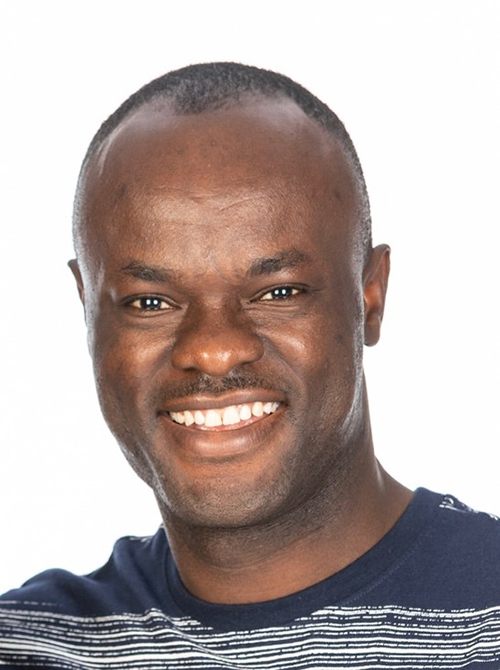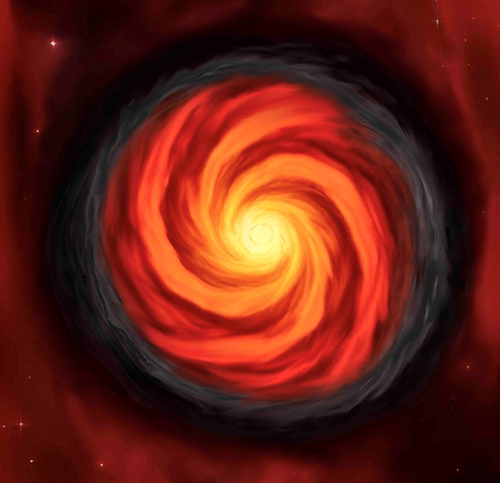Researchers have found an important piece of the puzzle in the formation of massive stars, also known as protons (stars with a mass that is about eight times or more greater than that of the sun). In the first-ever observational evidence, they have determined that accretion discs around forming protostars have spiral arm structures.
This significant discovery changes the way scientists look at big stars and will likely result in them specifically observing these kinds of arms in the forming discs of massive stars in future studies.
Prof James Chibueze, a researcher at the Centre for Space Research at the North-West University (NWU), was part of an international group of scientists who worked on the discovery. The team’s paper on their findings has been published in the Nature Astronomy journal*.
Vague evidence now in sharp focus
“There may have been very vague evidence of similar structures in other massive stars in other studies, but the results of this paper contain the clearest picture that convinces us that spiral arm-shape structures can be found in the inner part of the accretion disc of massive protostars,” he says.
“Those who have observed something in the past and plan to do more observations in the future can now consider the explanation of the observed properties around the inner disc ― the spiral morphologies that we have seen.”
Prof Chibueze says in the past decade, researchers understood that there are discs around massive stars to help them to accrete material needed for their formation, similar to the formation of low-mass stars. In this latest discovery, they noticed the spiral arm structure. Using microwave amplification by stimulation emission of radiation (MASER), the researchers succeeded in tracing the spiral arms around the inner part of the disc of the protostars.
More about the study
Prof Chibueze says the international team included researchers from South Africa, Japan, South Korea, Taiwan, Malaysia, Australia, Thailand, Ukraine, Latvia, Nigeria, Poland, Russia, Italy, Canada, Mexico, Tanzania, United Kingdom, China and the United States of America.
Work on the proposal was done in 2018 and 2019, and the observations were conducted multiple times over eight months in 2019, through various telescopes in Australia, South Africa, the United Kingdom, Germany, Spain, the Netherlands, Italy, Poland and the USA. Between 2020 and 2022, the final draft of the paper was written and scientific discussions were held.
Prof Chibueze contributed to writing the proposal and defining the science case needed to obtain approval to use the telescope for the part of study that was done locally. He also contributed to the scientific discussions of the results.
Thriving on ground-breaking research
Prof Chibueze says his PhD studies focused on understanding the early formative stages of massive stars. Now, being part of solving an additional piece of the puzzle is a proud moment.
“Hopefully this will motivate other researchers to continue digging deep into the mystery of massive stars in our quest to better understand these significant heavenly bodies.”
Prof Chibueze has often been in the news for his contributions to astrophysics/space research. In 2022, a paper was published on one of the most energetic cosmic events visible from earth ― a shock wave that extended for 6,5 million light years. He played an integral role in processing data from the novel MeerKAT radio telescope used to record this phenomenon.
He was also featured in the Nature journal for his contribution to the discovery of strokes of hot gas (jets) bending when they interact with Galaxy Cluster magnetic fields in 2021.
In addition, Prof Chibueze was the only researcher from Africa who contributed to the Japanese radio astronomy project on the very long baseline interferometry (VLBI) Exploration of Radio Astrometry (VERA). This project found that the Earth is moving faster than was originally thought and is nearly 2 000 light years closer than previously believed to the black hole in the centre of the Milky Way.
*Read the full article in the latest edition of the Nature Astronomy journal here.
For more information or to arrange an interview, email Prof James Chibueze at james.chibueze@nwu.ac.za.

Prof James Chibueze is currently working on various projects in astrophysics and space research.

Artistic impression: The spiral arm structures around the formation discs of protostars. Illustration: Charles Willmott and Ross Burns.
